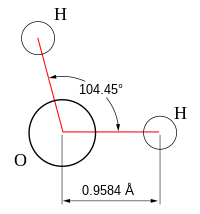
Photo from wikipedia
The excited-state (ES) geometry optimization and electronic emission (fluorescence and phosphorescence) spectra and the ES vibrational spectra of large systems are great challenges in quantum chemistry. In this work, we… Click to show full abstract
The excited-state (ES) geometry optimization and electronic emission (fluorescence and phosphorescence) spectra and the ES vibrational spectra of large systems are great challenges in quantum chemistry. In this work, we develop a generalized energy-based fragmentation (GEBF) approach to compute the localized ES structures and vibrational frequencies of large systems. In this approach, the ES energy derivatives (gradients or Hessians) for a localized ES of a large system can be obtained by combining the ES energy derivatives of the corresponding active subsystems (including local excitation center) and the ground-state energy derivatives of inactive subsystems. Two strategies are adopted to overcome two difficulties from state-classification and state-tracking for treating specific ESs. First, for state-classification, we develop an improved density-based spatial clustering applied with noise algorithm with a modified transition orbital projection (TOP) algorithm, which allow a certain ES energy and energy derivatives of the whole system to be calculated with different ES energies and energy derivatives of active subsystems. Furthermore, we also employ the TOP algorithm for tracking the ESs in their geometry optimizations at the time-dependent density functional theory (TDDFT) level. Then, the GEBF approach is applied to investigate the optimized ES geometries or ES vibrational frequencies for two typical systems. Our results show that the cost-effective GEBF approach can accurately reproduce the TDDFT fluorescence spectra of the cytosine derivative and the experimental phosphorescence spectra of the β-cyclodextrin derivative. The GEBF approach is expected to be routinely applied to investigate the electronic emission spectra of very large systems with local chromophores.
Journal Title: Journal of chemical theory and computation
Year Published: 2022
Link to full text (if available)
Share on Social Media: Sign Up to like & get
recommendations!